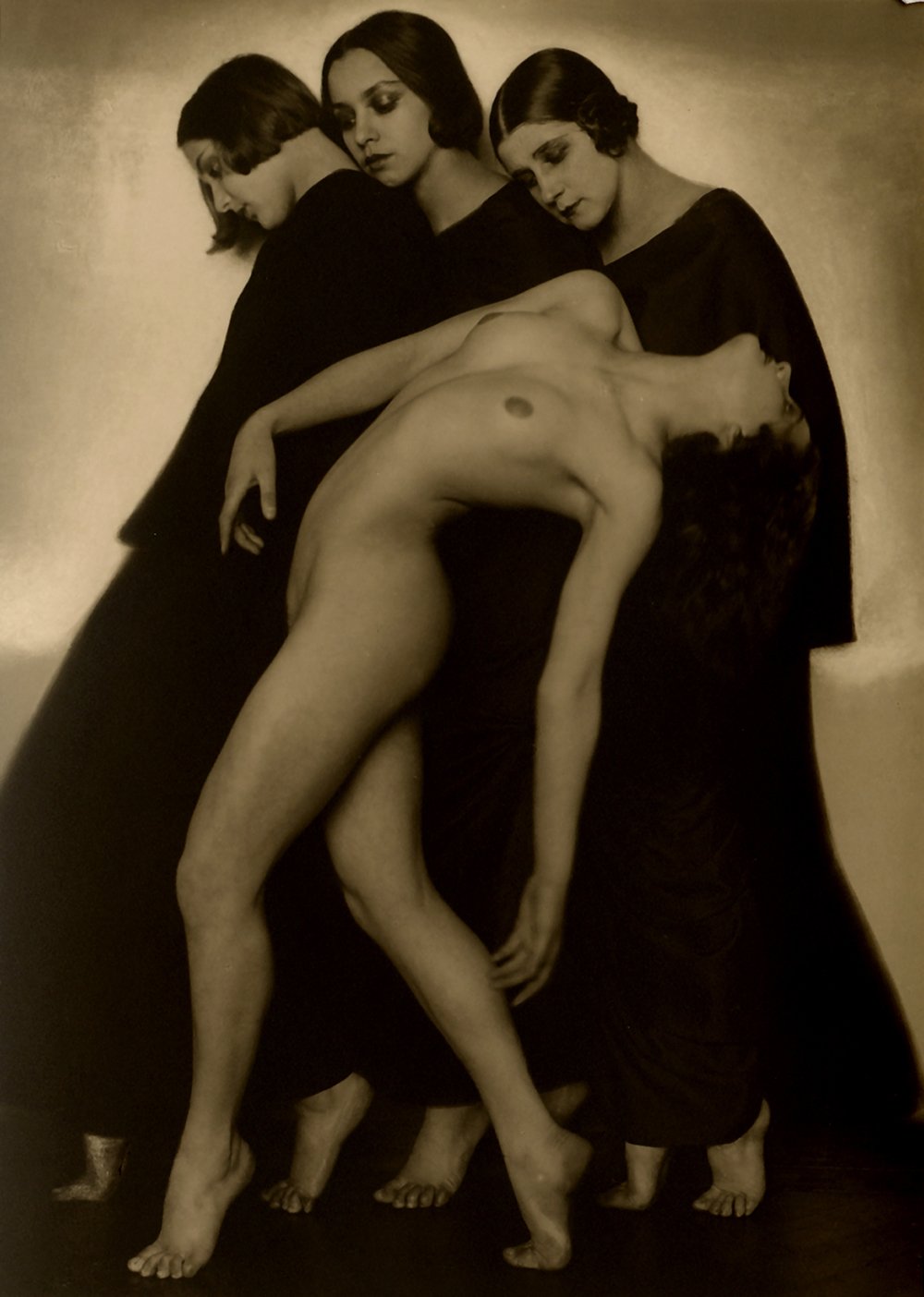An arch between body and psyche
A reflection on the exhibition Arch of Hysteria. Between Madness and Ecstasy at the Museum der Moderne Salzburg, which challenges the boundaries of body and mind.
Adi Nes, Untitled, aus der Serie „Boys", 2000/2023, chromogener Abzug, Courtesy Adi Nes & Praz-Delavallade Paris, Los Angeles, © Adi Nes
A curtain of bodies meets us when we step into Arch of Hysteria. In Valerie Schmidt’s Deleting Babiński (2014), eight pieces of fabric hang from the ceiling to the floor, the same young brunette woman printed on all of them. She floats in a river of red light, her eyes are closed, and her body assumes eerie poses. She appears to have completely given up her body to gravity: in one of the works, she is heavily leaning to the side, her shoulder is lifted, as if she is a doll in a puppet theatre. In another, her seemingly unconscious body lies heavily on the white background as if it were a mattress, while her crossed arms create an arch going from her fingertips to her bellybutton. This arch becomes a familiar sight throughout this exhibition at the Museum der Moderne Salzburg.
Arch of Hysteria, curated by Lena Nievers and Kerstin Stremmel, combines dozens of artworks and objects from the past 100 years, all relating to the arc de cercle, or the circular arch. A particularly big focus is the arched body and how significant of a role it has played in modern and contemporary dance and acrobatics. In fact, the arched back has become a symbol of emancipation in the dance world, as a protest against the rigidity of classical ballet. The exhibition includes countless photographs of dancers in extravagant movement, ranging from the beginning of the 20th century up until 2023.
Yet the arched body is not just a symbol of liberation in dance. Auguste Rodin also saw the convention-breaking potential of depicting a body in an abnormal position. Several of Rodin’s works are part of this exhibition, including Torse d’Adele (1882/83), a mesmerizing bronze sculpture of a woman with an arched back, lying on her side. It is a portrait of sensuality, the woman’s body seems to be in a pure state of ecstasy. This sensuality is shared by the figure on the drawings by Helene von Taussig (1933). The sketches show Harald Kreutzberg, a German dancer, in dynamic yet elegant movement. Yet Kreutzberg was not just any dancer. Although calling himself apolitical, he is known as “the dancing ambassador of National Socialist Germany”, becoming one of the most famous and highest-earning artists of Nazi-Germany. With Kreutzberg, bending over backwards takes on a meaning beyond body flexibility.
The elegant and calculated dance moves of von Taussig’s drawings shift into chaotic convulsions in Joachim Koester’s Tarantism (2007). The silent, black-and-white, 16 mm film shows six people frantically contracting against a black background. The title refers to tarantism, a term from the Middle Ages meaning a supposed illness caused by the bite of the tarantula. It was believed that this condition could be cured by a form of frenzied dancing. In Koester’s film, bodily convulsions and arching are shown as therapeutic and even as an ointment against sickness.
As if drawings, paintings, sculptures and films weren't enough of a labyrinth to get lost in, the exhibition tests its own boundaries of possibility with its very own Cabinet of Curiosities. Just like the traditional Cabinets of Curiosities, that have their roots back in the sixteenth century, it displays a wide range of objects that all glisten with their peculiarity, as well as all being related to the common theme of the bodily arch. Ranging from a poster of the 2010 film The Last Exorcism, in which a young girl is sinisterly bent backwards, to a plaster sculpture of a man in a bridge-like position, urinating in his own mouth (Arc de Triomphe by Gelitin Collective, 2003), it seems like a miniature festival for party animals of all kind.
Arch of Hysteria is a study of the possibilities and limitations (or lack thereof) of the human body and psyche. It’s a waltz between the corridors of time, media and form. Although the exhibition could seem like it bit off more than it can chew, it is still a captivating exploration of sensuality, illness, liberation, flexibility, and, sometimes, a complete letting go of control.




